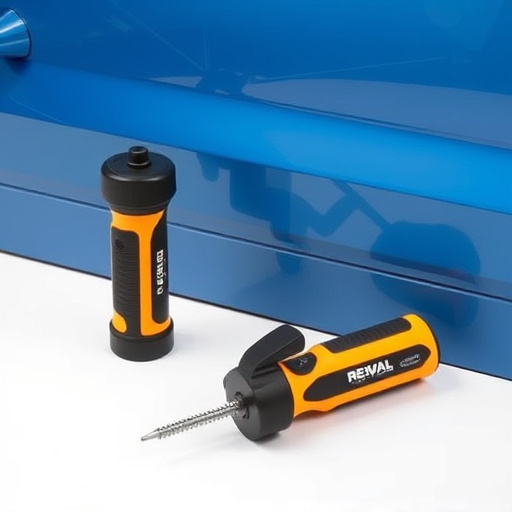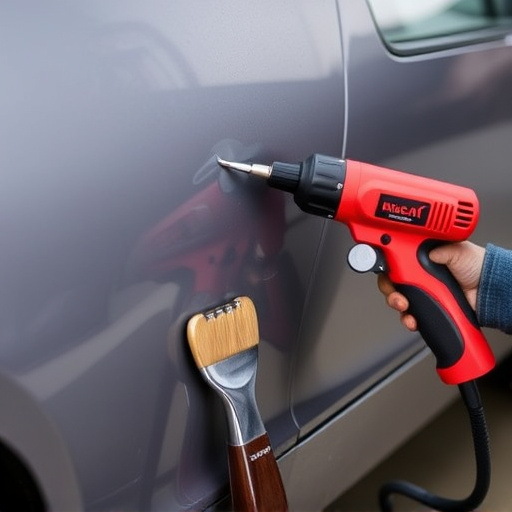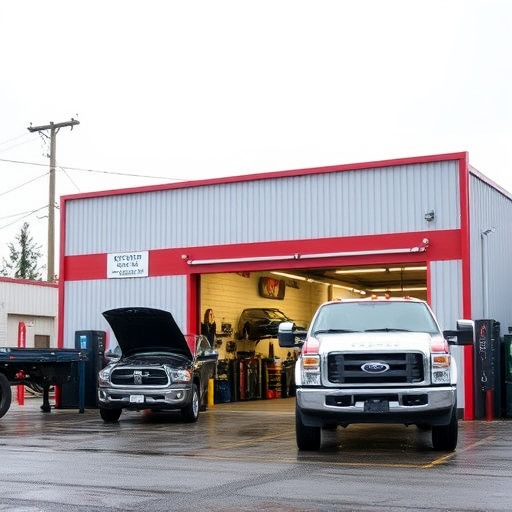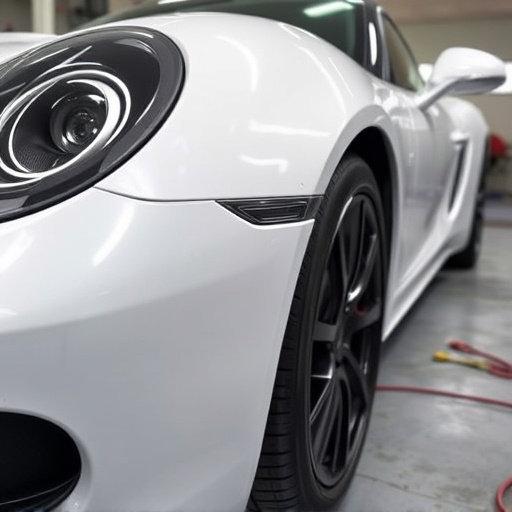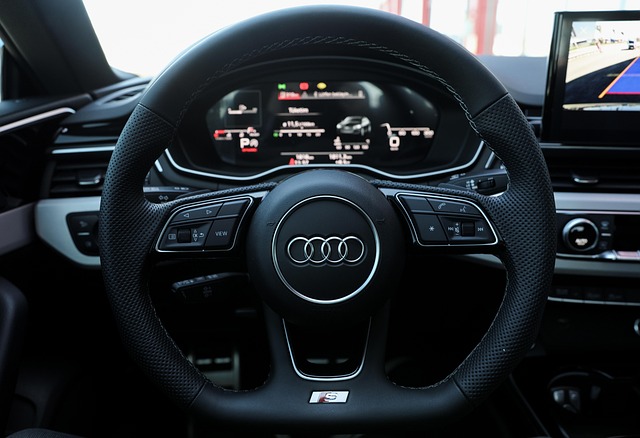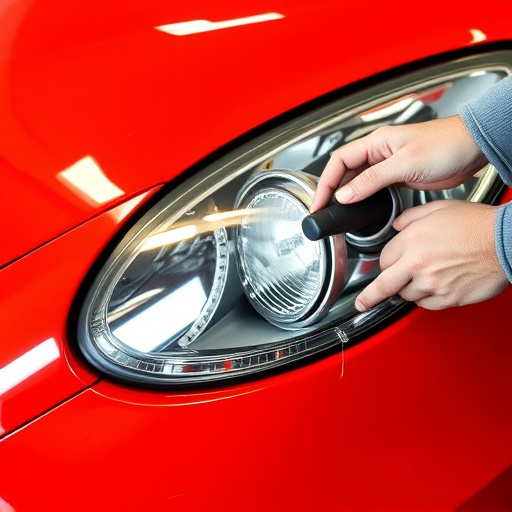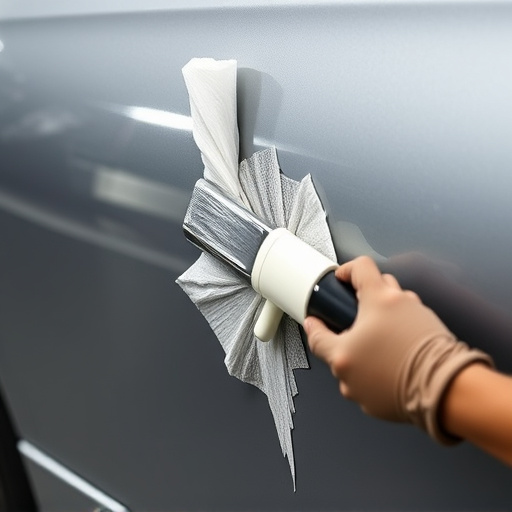Mercedes soft-close doors rely on an integrated electric system that can malfunction, causing operation and safety issues. Early signs include unusual noises, improper closing, delays, sticking, rattling, or visible damage. Basic checks like hinge inspection and sensor cleaning are initial troubleshooting steps. Persistent problems require power supply checks and diagnostic scans for error codes by professional autobody repairs or specialists. Regular maintenance prevents future repair needs through cleaning and lubricating moving parts. Prompt repair of observed issues prevents costly car restoration or auto painting.
Struggling with stubborn Mercedes soft-close doors? This guide is your key to diagnosing and repairing common malfunctions. Mercedes’ innovative soft-close mechanisms ensure smooth, automatic door closure, but issues can arise. Learn to identify telltale symptoms like delayed closing or erratic operation. We’ll walk you through effective troubleshooting techniques and provide valuable repair insights tailored for these sophisticated systems, helping you restore seamless performance to your Mercedes soft-close doors.
- Understanding Mercedes Soft-Close Door Mechanism
- Common Symptoms of Door Malfunction
- Troubleshooting and Repair Techniques for Soft-Close Doors
Understanding Mercedes Soft-Close Door Mechanism
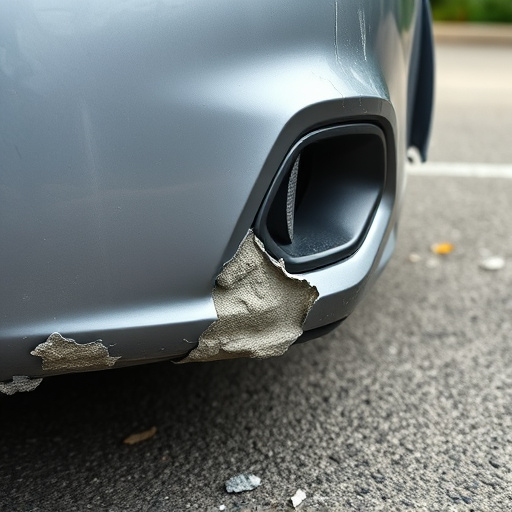
Mercedes soft-close doors are renowned for their smooth, silent operation, thanks to a sophisticated mechanism designed to ensure easy and automatic door closure. This system incorporates an electric motor, a precision gear train, and a pressure sensor that work in harmony to achieve a perfect balance between comfort and safety. The electric motor provides the initial force to close the door, while the gear train ensures precise control over speed and position. The pressure sensor acts as the final check, releasing the door’s holding mechanism only when the door is fully closed at the correct angle.
Any malfunction in this intricate system can lead to issues like doors that don’t close properly or stay open, impacting both functionality and safety. Therefore, understanding the basic operation of Mercedes soft-close doors is crucial before attempting any repairs. For those not comfortable with automotive repair services, it’s recommended to seek professional help for troubleshooting and eventual door replacement if needed. This ensures that any repairs or replacements are carried out by qualified technicians using top-quality parts, preserving the car’s safety and resale value. Remember, timely attention to door malfunctions can prevent more serious issues down the line, making it a wise investment in your vehicle’s upkeep, including any necessary car scratch repair or bodywork services.
Common Symptoms of Door Malfunction
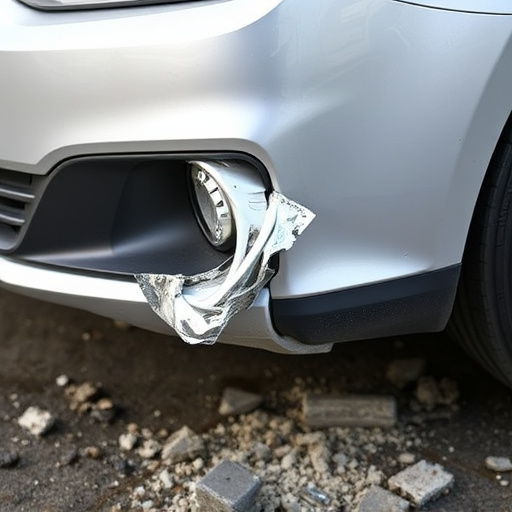
The first sign of a malfunction with Mercedes soft-close doors is often an unusual noise. You may hear clicking, popping, or grinding sounds when opening or closing the door. This indicates that the mechanical components are not functioning optimally. Another common symptom is the door not closing properly; it might bounce back up instead of smoothly shutting, revealing a gap at the seal. Moreover, if the door takes an unusually long time to open or close, or if it sticks and requires excessive force, these could also be indicators of a problem with the soft-close system.
In some cases, the door may not stay in the closed position, leading to a persistent rattling noise while driving at speed. Visual cues include dents or misalignments in the door panel, particularly around the hinges and seals, which can occur due to the door’s failure to close correctly. If you notice any of these symptoms, it’s advisable to seek professional assistance for Mercedes soft-close doors repair, as issues left unchecked could escalate into more complex and costly car restoration or auto painting tasks.
Troubleshooting and Repair Techniques for Soft-Close Doors
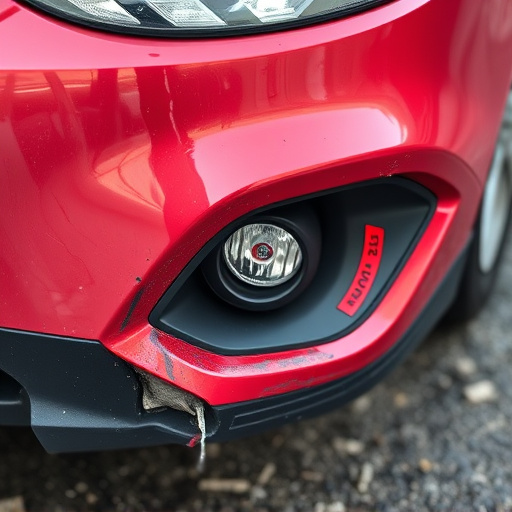
When troubleshooting Mercedes soft-close door malfunctions, start with simple checks such as inspecting the door hinges for any loose or damaged components. Ensure the door sensors are clean and free from debris, as dirty sensors can cause miscommunication between the control unit and the actuators, leading to improper door operation. If the issue persists, consider checking the power supply to the soft-close mechanism, as an insufficient voltage can disrupt its functionality.
For more complex issues, it may be necessary to engage professional autobody repairs or automotive repair services. Auto repair specialists can perform diagnostic scans using advanced tools to identify any error codes stored in the vehicle’s computer system. Depending on the diagnosis, repairs could range from replacing faulty actuators or control units to calibrating the entire soft-close door mechanism. Regular maintenance, including cleaning and lubricating moving parts, can also prevent future Mercedes soft-close doors repair needs.
Mercedes soft-close doors are renowned for their innovative design and smooth operation. However, like any complex mechanism, they can experience malfunctions. By understanding the door’s functioning, recognizing common symptoms, and employing effective troubleshooting techniques, car owners can efficiently diagnose and resolve issues with their Mercedes soft-close doors. With a bit of knowledge and the right tools, you can ensure these features continue to enhance your driving experience seamlessly. For more in-depth guidance, consider exploring specialized repair resources tailored to Mercedes vehicles for comprehensive step-by-step instructions on Mercedes soft-close doors repair.

